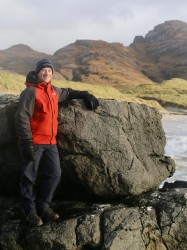BibTex format
@inbook{Wilkinson:2017:10.4095/306305,
author = {Wilkinson, JJ and Cooke, D and Baker, M and Chang, Z and Wilkinson, C and Chen, H and Fox, N and Hollings, P and White, N and Gemmell, JB and Loader, M and Pacey, A and Sievwright, R and Hart, L and Brugge, E},
booktitle = {Application of indicator mineral methods to bedrock andsediments},
doi = {10.4095/306305},
editor = {McClenaghan and Layton-Matthews},
pages = {67--77},
publisher = {Geological Survey of Canada},
title = {Porphyry indicator minerals and their mineral chemistry as vectoring and fertility tools},
url = {http://dx.doi.org/10.4095/306305},
year = {2017}
}

